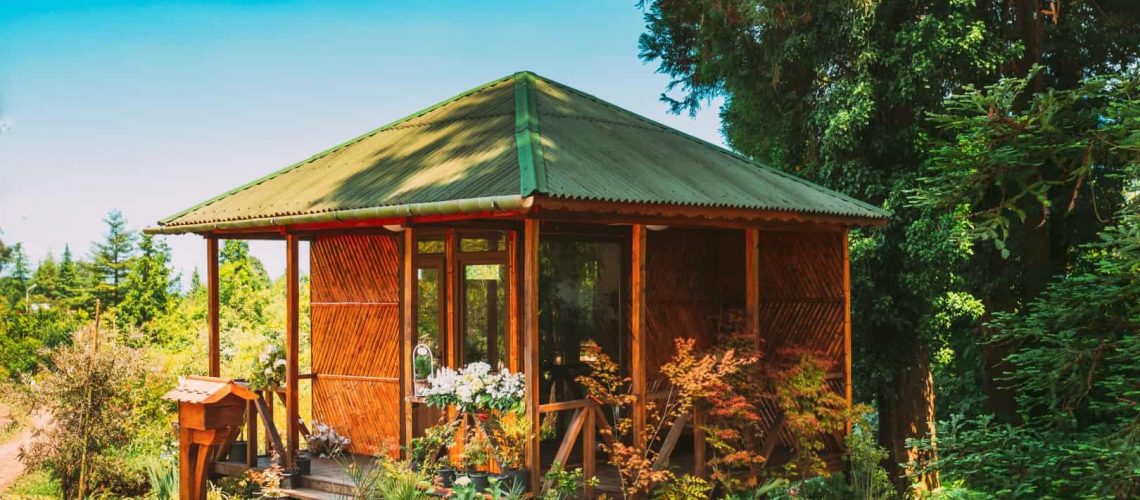Are you one of those people who can’t wait for the summer to come in so that they can spend time outdoors? If you’re thinking about ventilating your summer house first, you’ll have to figure out if your summer house already has some protection or it requires an overall makeover.
Whether you want to place a ventilation grate at the front or back of the summer house or install an internal floor, both require thoughtful and thorough planning. It depends on whether you want to hire help or do the ventilation on your own. You can use a drill and do the installations yourself or hire a professional team that will do your work while you can sit back and relax.
If you want to learn how to ventilate a summer house in the simplest with the least number of tools, keep reading this article till the very end.

What are the different ways you can ventilate a summer house?
If this is your first time ventilating a summer house, you must have many questions in mind. One of the fundamental questions might be the different tips and tricks as well as convenient methods that can be used for ventilation. Here is what you need to know. You can opt for different ventilation methods based on what your house looks like, how much space it has, and how humid it is where you live. Once you’ve found the answer to these questions, it won’t be challenging to figure out which one of the options mentioned below suits you the best.
Install ventilation grilles
Installing ventilation grilles is crucial as they help prevent moisture and mold growth. It is effortless and easy to install ventilation grilles as all you have to do is mark the appropriate spots on your summer house walls. After the places have been observed, drill a hole in all corners and cut out the space. Now that you have a clear opening, you can easily place your ventilation grilles to ensure that your summer house is ventilated 24/7.
Just a pro tip you need to remember is to install two grilles instead of one, installing one of them near the ceiling and the other one near the floor to ensure that the ventilation process goes on smoothly.
Materials needed
- A drill
- Ventilation grilles
- Pencil for markings
- A cutter to cut out the area
- Measuring tape for accurate distance measurements
Keeps door and windows open
One of the very basic ways of keeping your summer house ventilated, that too without spending a penny, is to keep the windows and doors open at most times of the day. Opening doors and windows might seem very simple and obvious, but it is a practical yet natural way of keeping your summer house ventilated. This way, hot air will flow out of your home, and cool fresh air will make its way inside without any barriers. This technique will also help to keep the moisture away and prevent mold growth.
The only thing you will have to remember is to shut the windows and lock the door safely at night time before you go to bed to avoid any street dogs or cats coming in or even providing burglars for a place to hide in.
Install a solar fan
Installing a solar fan is another feasible option that you can go for so that you can utilize solar radiation in the best way possible and make free use of the sun without having to pay extra. A solar fan pulls air from the outside to provide fresh air to ensure that your summer house remains ventilated.
Make sure that you attach the solar fan on the outside wall of your summer house and a bit higher so that it functions properly. The best part is that installing a solar fan will not only save your money and energy but also helps lower and maintain the temperature of your summer house without making any noise.
Invest in wall vents
Wall vents are useful in protecting your ventilation system from bugs, dust, and pollution outside, which could easily make its way inside. If your summer house lacks wall vents, the poor air quality will harm your health, cause furniture inside your house to rust easily, and you would have to breathe in heavy and stale air all the time.
The wall vents are available in different sizes, so you can easily find one which is the size of your summer house. If you install the vent on the lower side of the wall, it will be an ideal place as it will quickly take in cold air and let go of the hot air. For best or improved results, you can try mounting the wall vents on the higher side of the wall so that air can be circulated properly.
How to know if your summer house is properly ventilated or not?
You will see multiple signs around you to know that your house is updated regarding ventilation and doesn’t require more work. If you are in a well-ventilated space, you will feel fresher, spot no dust or bugs around, and have cool air to breathe in.
On the other hand, if your house is not well-ventilated, you might experience dust allergies, discomfort, and dizziness due to breathing in warm stale air, and it is possible that you might detect bugs inside the space.
Benefits of a ventilated summer house
Most summer houses have well-maintained ventilation checks to ensure that you breathe in fresh air without any smell or pollutants. A well-ventilated summer house keeps you away from health or breathing issues as well as watery or red eyes due to moisture. It helps control the various impurities present in the air and regulates the air on a daily basis. In high temperatures, you will be able to relax comfortably when the cool breeze flows inside the summer house and the hot stale air flows out through the vents.

